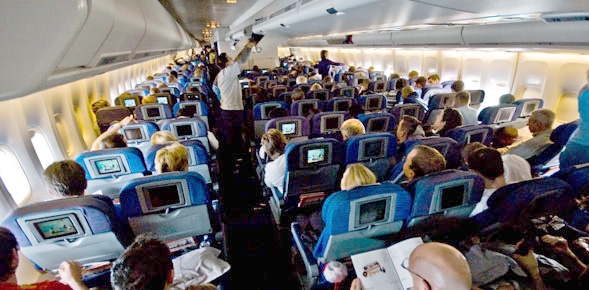Iata expects airlines to welcome some 3.6 billion passengers in 2016. That's about 800 million more than the 2.8 billion passengers carried by airlines in 2011.
This industry consensus outlook for system-wide passenger growth sees passenger numbers expanding by an average of 5.3% per annum between 2012 and 2016. The 28.5% increase in passenger numbers over the forecast period will see almost 500 million new passengers traveling on domestic routes and 331 million new passengers on international services.
Through 2016, the United States will continue to be the largest single market for domestic passengers (710.2 million). In the same year, passengers on international routes connected to the United States will total 223 million, making it the largest single market for international travel as well. Reflecting the maturity of the United States market, growth rates (2.6% for domestic and 4.3% for international) will be well below the international average (5.3 % for international travel and 5.2% for domestic traffic).
"Despite the current economic uncertainty, expected demand for connectivity remains strong. That's good news for the global economy. Growing air transport links generate jobs and underpin economic growth in all economies. But exploiting these will require governments to recognize aviation's value with policies that do not stifle innovation, tax regimes that do not punish success and investments to enable infrastructure to keep up with growth," said Tony Tyler, Iata's Director General and CEO. Globally, aviation supports some 57 million jobs and $2.2 trillion in economic activity.
International passenger numbers are expected to grow from 1.11 billion in 2011 to 1.45 billion passengers in 2016, bringing 331 million passengers for a compound annual growth rate (CAGR) of 5.3%.
Five of the 10 fastest growing markets for international passenger traffic are among the Commonwealth of Independent States or were part of the former Soviet Union with the others in Latin America, Africa and the Asia-Pacific region. Kazakhstan leads at 20.3% CAGR, followed by Uzbekistan (11.1%), Sudan (9.2%), Uruguay (9%), Azerbaijan (8.9%), Ukraine (8.8%), Cambodia (8.7%), Chile (8.5%), Panama (8.5%) and the Russian Federation (8.4%).
By 2016, the top five countries for international travel measured by number of passengers will be the United States (at 223.1 million, an increase of 42.1 million), the United Kingdom (at 200.8 million, 32.8 million new passengers), Germany (at 172.9 million, +28.2 million), Spain (134.6 million, +21.6 million), and France (123.1 million, +23.4 million).
ifpinfo
7 December






































































